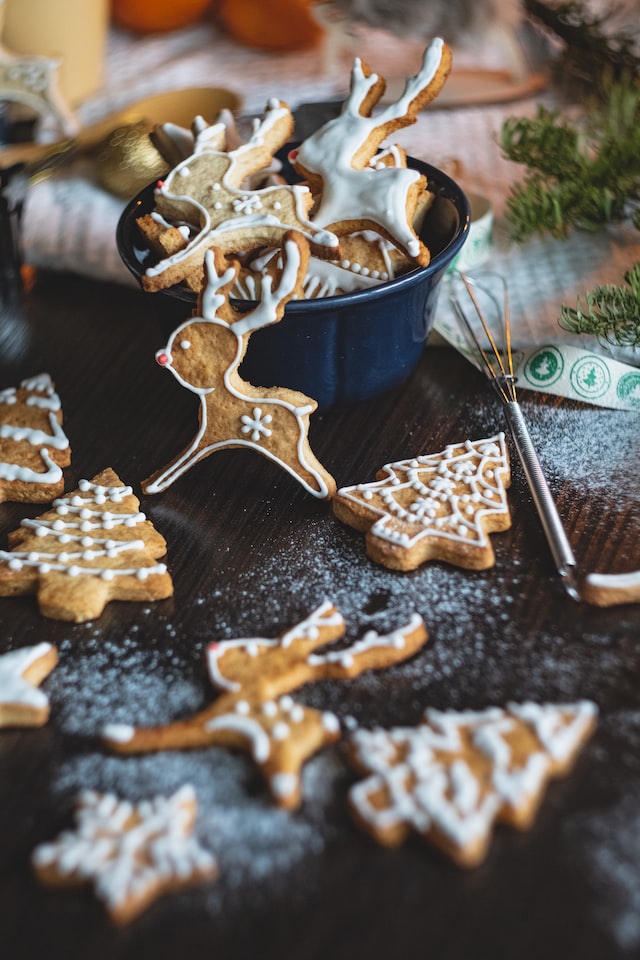
Digital Editor Cara-Louise Scott explores the origins of some of the most beloved and popular Christmas treats
Christmas is a time to relax and share delicious food exclusively available at this time of year with family and friends. There are certain treats associated with Christmas that keep alive the traditions of years past. But where do some of them come from? And why are they so closely associated with Christmas?
Paganism has informed many forms of Christmas celebrations, but it is the Victorians who really shaped the traditions we still carry on today. The emphasis on family, preparing and sharing a feast, decorating, gifts and parlour games became the principal elements of Christmas. Charles Dickens was the one in particular who spread the idea of a Christmas dinner with a roast bird, all the trimmings and the pudding on the table. His book A Christmas Carol, is known in helping to popularise and make appealing the traditions of Christmas with themes of family, charity, and goodwill.
Some of the most beloved Christmas treats origins’ are featured below.
Candy Canes
These sugary sticks made their first appearance in Germany when a choirmaster at the Cologne Cathedral used sugar sticks to quiet down his young choir members during their Living Creche ceremony. The legend says that because of the Christmas season, the choirmaster bent the candies to look like a shepherd’s crook or the letter ‘J’ to represent Jesus.
Christmas Cake
Christmas cake (which is a personal favourite of mine) originates from a cake that was made for and eaten on the Twelfth Night, the 5th January, believed then to be the date of the three wise men’s arrival in Bethlehem to see the new-born Jesus. The use of spices is supposed to symbolise the gifts that the three wise men brought to Jesus. The pricier addition of almonds and dried fruit add some festive luxury.
In the 1640’s, Oliver Cromwell and the Puritans banned feasting on the Twelfth Night which meant that people began to make Christmas cake on Christmas day instead. It was in the Victorian times that marzipan was introduced in place of almonds in their natural form and it became a fashionable occurrence to decorate the cake.
Eggnog
Many food historians agree that the eggnog originated from a warm milk and ale drink during the early Medieval period in Britain. The drink was reserved for toasting to good health and fortune, particularly among the upper class. While it is likely that Sherry was the original alcoholic addition to this drink, it was replaced with Rum when it made its way to America, as a cheaper alternative.
Gingerbread Houses
The tradition of building and decorating the classic gingerbread houses came from Germany, when the famous Brothers Grimm published their compilation of fairy tales in the 1800’s. As the fairy tale of Hansel and Gretel (who stumble upon a house made of gingerbread and sugar decorations) circulated round Germany, German bakes began creating their own versions with gingerbread and the idea eventually circulated around the globe.
Mulled Wine
Mulled Wine originates from the 2nd century, created by the Romans who would heat wine to defend their bodies against the coldness of winter. As the Romans began to conquer most of Europe throughout the following century, their loved for mulled wine spread across their empire. As the popularity grew, Europeans began to mix heated wine with spices to promote health and avoid sickness. Mulled wine has become a popular Christmas beverage with a range of unique twists to please many of us.
Yule Log
You’ll be surprised to hear that the beloved rolled chocolate sponge cake goes all the way back to the Iron Age, when Celts would burn huge decorated logs to celebrate the winter solstice. The tradition continued as Christianity grew in popularity across the UK, but as houses and their fireplaces grew smaller, the act of burning giant logs became tough. There is some speculation surrounding the inventor of the cake we know and love, however they became hugely popular in the 19th century when Parisian pastry chefs started making and decorating Yule logs to display as a festive enticement in their shop windows.
Hungry for more? Check out some of these articles!
Halloween and Christmas Food Waste: How We Can Do Better
Candy Cane Delivery Service by Action Against Homeless Society

Comments